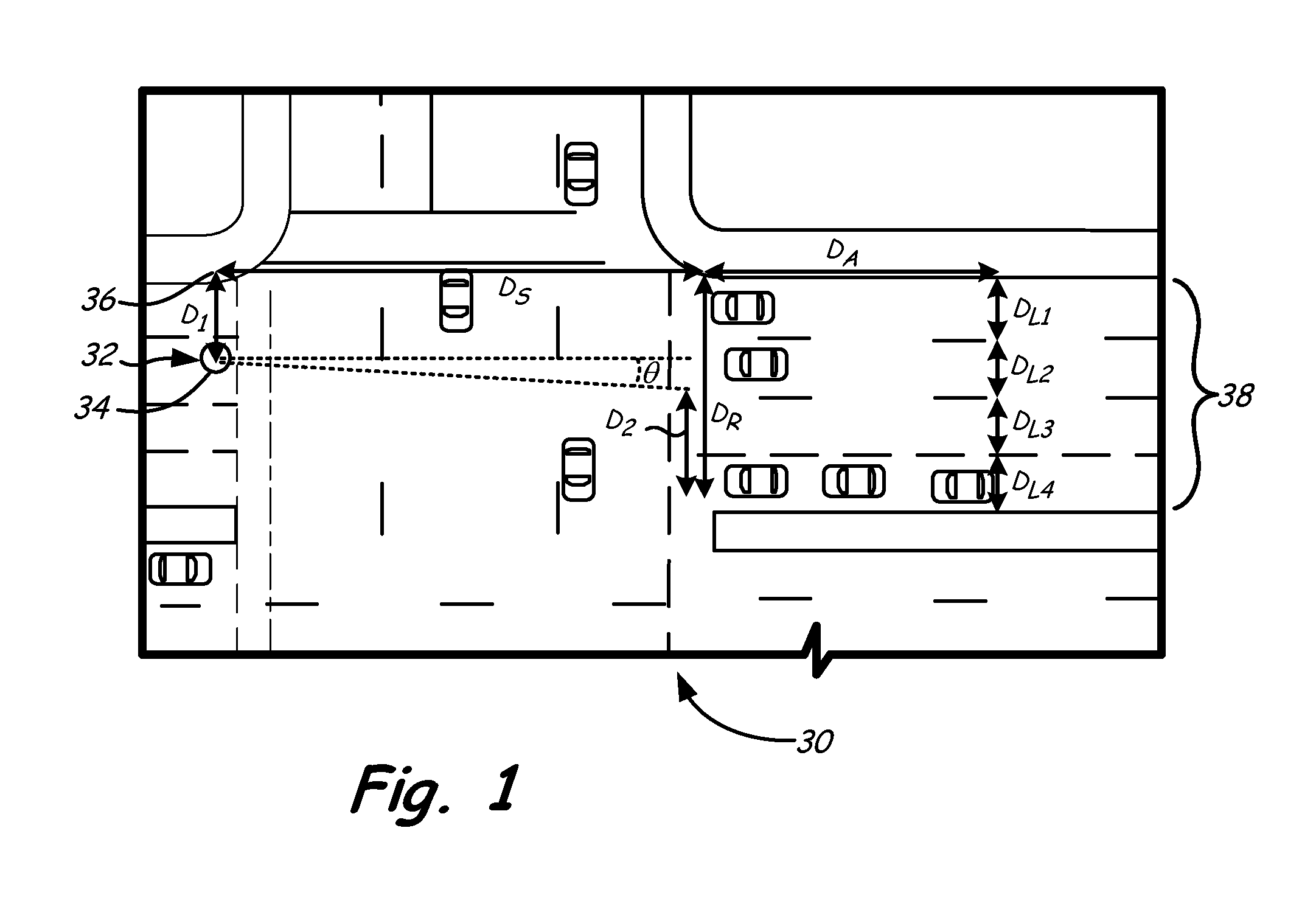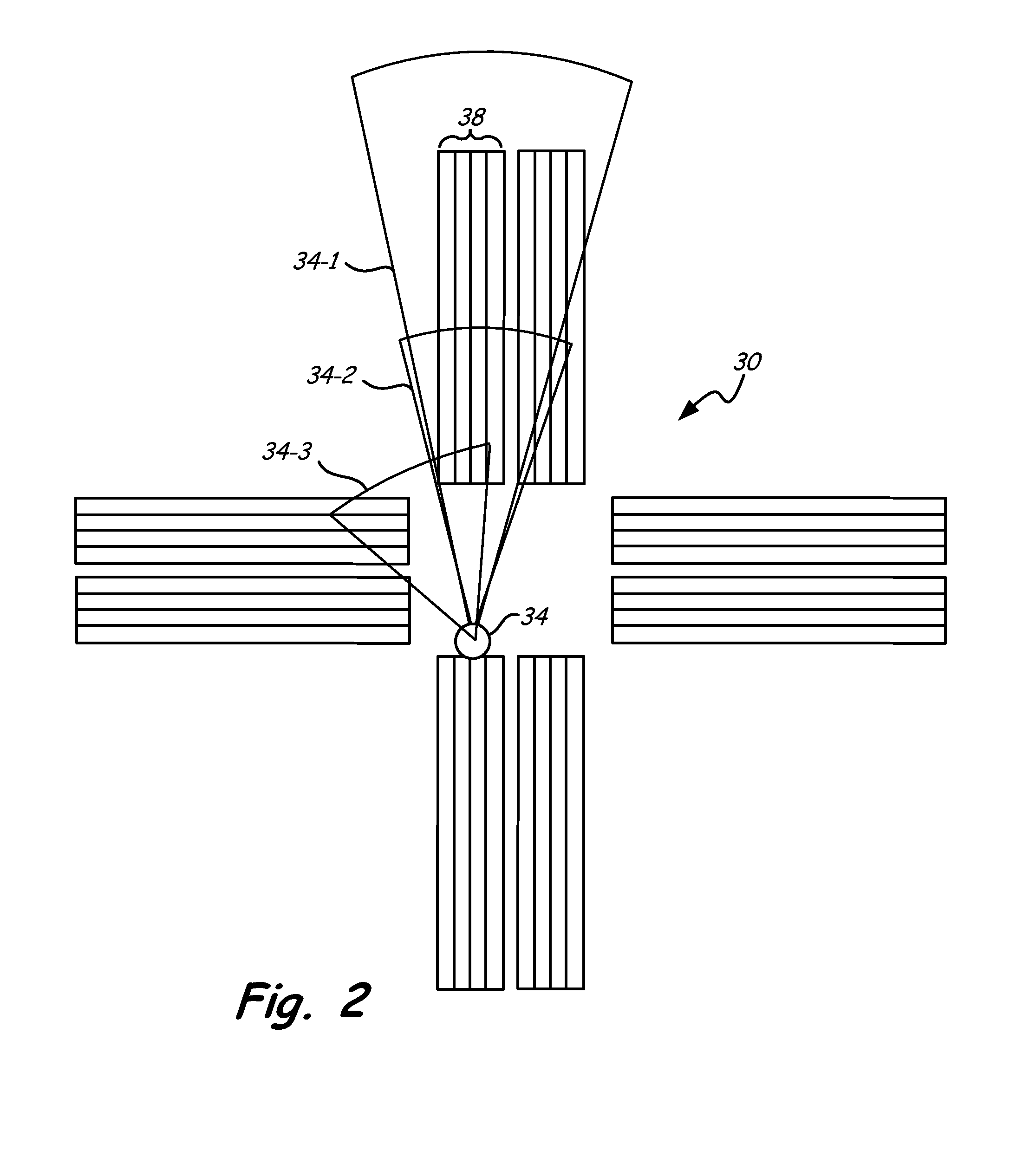Hybrid traffic system and associated method
a traffic system and hybrid technology, applied in the field of traffic sensor systems, can solve the problems of undesired false alarms of machine vision sensors, undesirable increase of false alarms and early detector actuation, and the effect of applying shadow false alarm filters to machine vision systems
- Summary
- Abstract
- Description
- Claims
- Application Information
AI Technical Summary
Benefits of technology
Problems solved by technology
Method used
Image
Examples
Embodiment Construction
[0030]In general, the present invention provides a traffic sensing system that includes multiple sensing modalities, as well as an associated method for normalizing overlapping sensor fields of view and operating the traffic sensing system. The system can be installed at a roadway, such as at a roadway intersection, and can work in conjunction with traffic control systems. Traffic sensing systems can incorporate radar sensors, machine vision sensors, etc. The present invention provides a hybrid sensing system that includes different types of sensing modalities (i.e., different sensor types) with at least partially overlapping fields of view that can each be selectively used for traffic sensing under particular circumstances. These different sensing modalities can be switched as a function of operating conditions. For instance, machine vision sensing can be used during clear daytime conditions and radar sensing can be used instead during nighttime conditions. In various embodiments, ...
PUM
 Login to View More
Login to View More Abstract
Description
Claims
Application Information
 Login to View More
Login to View More - R&D
- Intellectual Property
- Life Sciences
- Materials
- Tech Scout
- Unparalleled Data Quality
- Higher Quality Content
- 60% Fewer Hallucinations
Browse by: Latest US Patents, China's latest patents, Technical Efficacy Thesaurus, Application Domain, Technology Topic, Popular Technical Reports.
© 2025 PatSnap. All rights reserved.Legal|Privacy policy|Modern Slavery Act Transparency Statement|Sitemap|About US| Contact US: help@patsnap.com



